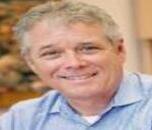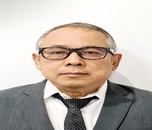5408
Scientific Program
Keynote Session:
Oral Session 1:
- Zero waste concepts
Title: How to create a culture of empowerment around your zero-waste program
Biography:
Bruce is a driver and promoter for sustainability change and believes that Culture, Communication and Collection are the 3 driving factors for achieving zero waste. This redefined concept – “CleanRiver 3C Process” has been adopted and widely followed by organizations such as Google, Tesla, Facebook and Tim Hortons. A highly sought-after speaker at industry events, Bruce shares his 25 years’ experience through best practices on effective waste management, achieving social ROI, developing a sustainable culture in organizations and the financial ROI from effective recycling.
Abstract:
This presentation is a critical must-see for anyone seeking tangible strategies to drive engagement in their zero waste program. The presentation will include key strategies that have been proven to work in numerous fortune 500 companies who are leading the way in sustainability.
Key learning objectives (attendees will leave with the following actionable knowledge):
· How to effectively plan a zero waste program and identify and overcome any potential challenges
· Practical advice on how to engage custodial teams, staff and students to ensure the success of your zero waste program
· A thorough understanding of how the “3C Process” drives cultural change within their organization to assist them in reaching their zero waste goals
Are you set up for success or failure?
- An overview of key areas that are critical for program success from waste hauler contracts, financial restrictions, equipment, custodial challenges and high contamination issues.
- How to identify where your organization is now regarding culture.
- An overview of the 3C Process best practices for zero waste success (Culture, Communication, Collection)
How to effectively drive change in the culture to bring about sustainability success
- The impact of senior leadership
- Practical tips on how to engage employees and custodial team in the zero-waste program
- Extended Producer Policies
- Overview of Langley Events Centre case study – used the “3C Process” to reduce landfill waste by 63%
Overview of Xcel Energy Center case study – how they increased their diversion rate to 66% using the “3C Process”
Oral Session 2:
- Water, Waste and Energy Management
Title: The Effect of Catalyst Calcination Temperature on Catalytic Decomposition of Waste HFC-134a over γ-Al2O3
Biography:
Mahshab Sheraz studied in the department of Environmental Sciences and Biotechnology, Hallym University, Chuncheon 24252, Republic of Korea and also he is also worked in 2Nano-Innotek Corporation Guro-gu, Seoul 08390, Korea.
Abstract:
This research contains the decomposition techniques for waste 1,1,1,2-tetrafluoromethane (HFC-134a). HFC-134a is a potent synthetic GHG with a GWP of 1300. The rise in demand for air conditioners has caused a steep increase in the atmospheric concentration of HFC-134a. This research explores the thermal and catalytic pyrolysis of waste HFC-134a over γ-Al2O3 calcined at temperatures of 550 °C (A550), 650 °C (A650), 750 °C (A750), and 850 °C (A850). The physicochemical properties of catalysts were studied through thermogravimetric analysis (TGA), Brunauer–Emmett–Teller equation for nitrogen physisorption analysis (BET), X-ray diffraction (XRD), and temperature-programmed desorption of ammonia (NH3-TPD). The non-catalytic pyrolysis of HFC-134a showed less than 15% decomposition of HFC-134a. Catalysts increased the decomposition as A650 revealed the highest decomposition efficiency by decomposing more than 95% HFC-134a for 8 h followed by A750, A850, and A550. The larger surface area and pore volume paired with a low amount of strong acidic sites were considered as the main contributors to the comparatively longer catalytic activity of A650.
Title: Clean Technologies for Sustainable Development
Biography:
Veljko Radicevic is Senior Lecturer, Academy of Technical and Art Applied Studies Belgrade, Serbia. Department School of Railroad Transport of Applied Studies in Belgrade, Serbia
Abstract:
The enlarged use of automobiles has multiplied certain side effects, such as congestion, growing number of casualties in traffic accidents, noise, air pollution, rapid warming and destruction of the ozone layer. These factors directly or indirectly affect the quality of life of the inhabitants of large cities. It is clear that the pollution problems may be reduced by the use of “cleaner“ technologies in the operation of motor vehicles. The other problems are associated with the increasing use of motor vehicles, and cannot be solved in this way. They are related to the impact on health (injuries in traffic accidents and decreasing physical activity), economy (severe traffic congestion and extended travel time), environment (occupation of green spaces, noise), and society (alienation and space reduction). Modern approaches in solving the above mentioned issues can be found in the principles of sustainable development. The reduction of the use of motor vehicles is realized by taking “soft measures“, such as: making use of various forms of communication, advertizing and education aiming at altered attitude and behaviour in local community.
Title: Ecological Solid Waste Management Act of 2000
Biography:
Geronimo Antonio B. Singson working as seninor professor at Central Mindanao University, Philippines.
Abstract:
Waste mismanagement has serious environmental effects making the passage of the Republic Act (RA) 9003 or the Ecological Solid Waste Management Act of 2000 a landmark environmental legislation in the Philippines. The law was crafted in response to the looming garbage problems in the country. RA 9003 declares the policy of the state in adopting a systematic, comprehensive and ecological solid waste management program that ensures the protection of public health and the environment and the proper segregation, collection, transport, storage, treatment and disposal of solid waste through the formulation and adoption of best environmental practices. Moreover, it illustrates the potentials and benefits of recycling not only in addressing waste management problems but also in alleviating poverty.
RA 9003 was passed by the Philippine Congress on December 20, 2000 and was subsequently approved by the Office of the President on January 26,2001. It contains seven (7) chapters sub-divided into 66 sections setting out policy direction for an effective solid waste management program in the country.
Ecological Solid Waste Management Act of 2000
RA 9003 was passed by the Philippine Congress on December 20, 2000 and was subsequently approved by the Office of the President on January 26,2001. It contains seven (7) chapters sub-divided into 66 sections setting out policy direction for an effective solid waste management program in the country.
Ecological Solid Waste Management Act of 2000
RA 9003 describes solid waste management as a discipline associated with the control of generation, storage, collection, transfer and transport, processing, and disposal of solid wastes. The manner by which these activities are conducted shall be in accord with the best principles of public health, economics, engineering, conservation, aesthetics, other environmental considerations, and public attitudes. The Act provides for a comprehensive ecological solid waste management program by creating the necessary institutional mechanisms and incentives, appropriating funds, declaring certain acts prohibited, and providing penalties.
Institutional Mechanism
The establishment of a National Solid Waste Management Commission (NSWMC) and Solid Waste Management Board (SWMB) in each local government unit (LGU) is mandated by RA 9003 to be represented by public officials, in their ex officio capacity, and the private sector. The Commission shall serve as the coordinating body and likewise develop and implement the National Solid Waste Management Framework. The SWMB, on the other hand, is directed to formulate a 10-year local Ecological Solid Waste Management Plans instituting an effective and sustainable solid waste management plan with primary emphasis on implementation of all feasible re-use, recycling and composting programs. This is pursuant to relevant provisions under RA 7160 or the Local Government Code.
Comprehensive Solid Waste Management
Waste Characterization and Segregation. The solid waste generated within the area of jurisdiction shall be characterized for initial source reduction and recycling element of the local waste management plan. A separate container is required for each type of waste for on-site collection properly marked as "compostable", "non-recyclable", "recyclable" or "special waste". Waste segregation shall primarily be conducted at the source including household, commercial, industrial and agricultural sources.
Source Reduction. This refers to the methods by which the LGUs can reduce a sufficient amount of solid waste disposed within five (5) years. LGUs are expected to divert at least 25% of all solid waste from waste disposal facilities through re use, recycling and composting activities. The rate of waste diversion is set to increase every three (3) years.





